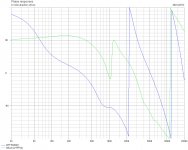Been having another look at the simulations from boxplot for my diy kef chorales. Drivers being used are Kef B200 SP1063 and SEAS 22TFF H1280. The cabinet is approximately 24L (265x255x480mm) and ported. (60x170mm)
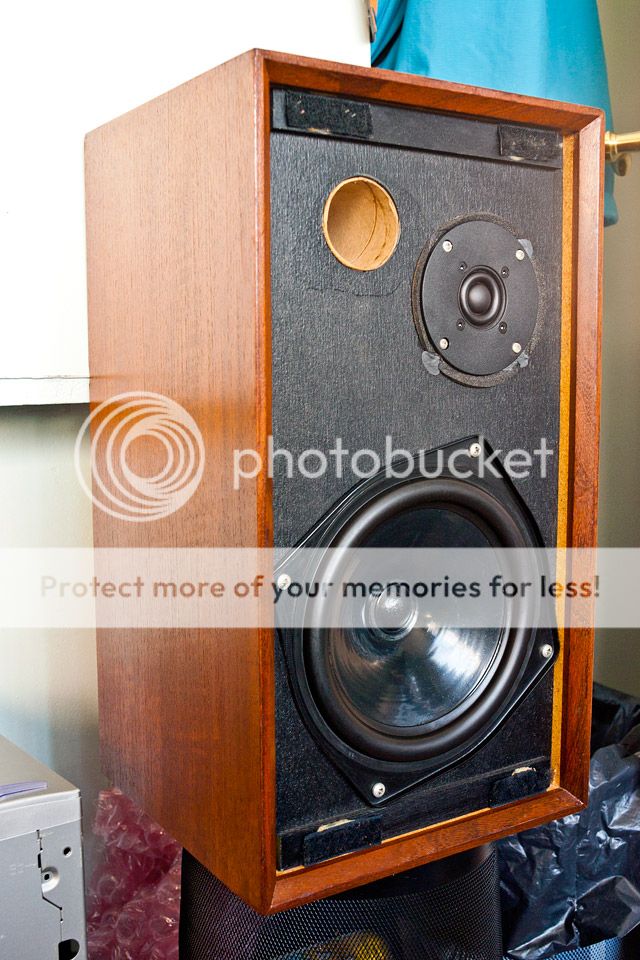
This is the current crossover setup:
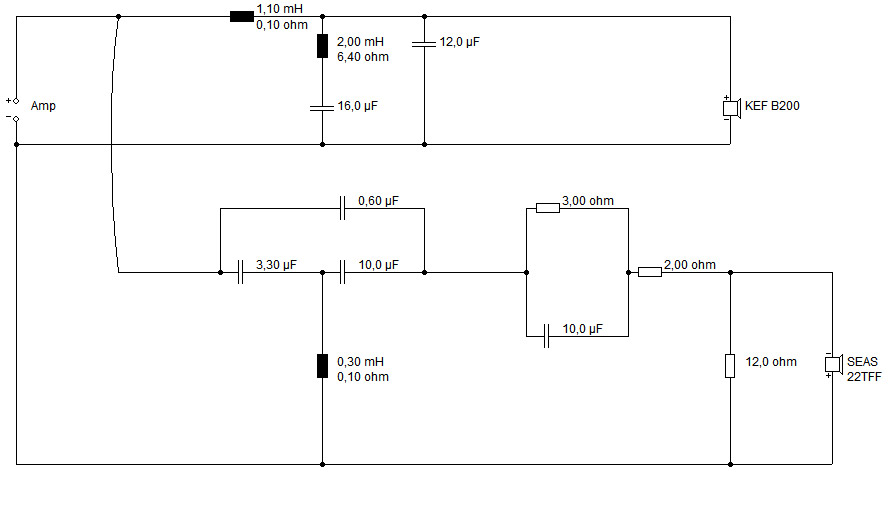
and it's simulation, with a large "hump" in the mid range:
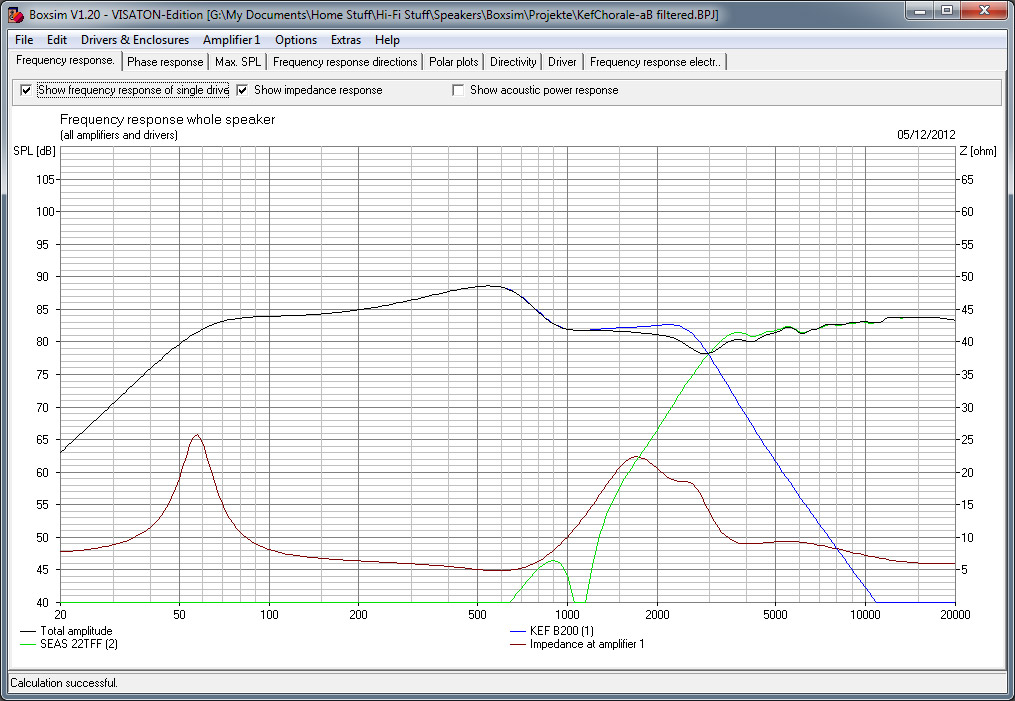
Taking the 16uF capacitor out of the notch filter results in a much flatter plot (taking the whole notch filter out isn't as flat):


I'll have to admit that i cannot hear this large hump in the mid-range. I have also noticed that the bass response is much improved when it is simulated as a closed box vs ported. Is there any easy way to close the port effectively? Presently is is fully stuffed with dense foam matting, but that doesn't seal them. (and according to boxplot sims, a stuffed port has even worse LF than both open ported and closed box)

This is the current crossover setup:
and it's simulation, with a large "hump" in the mid range:
Taking the 16uF capacitor out of the notch filter results in a much flatter plot (taking the whole notch filter out isn't as flat):
I'll have to admit that i cannot hear this large hump in the mid-range. I have also noticed that the bass response is much improved when it is simulated as a closed box vs ported. Is there any easy way to close the port effectively? Presently is is fully stuffed with dense foam matting, but that doesn't seal them. (and according to boxplot sims, a stuffed port has even worse LF than both open ported and closed box)
Stuffing the port with foam is fully adequate to convert to sealed box. Marantz sold a series years ago that came with foam plugs for tuning. Even if it leaks a little you just have a leaky sealed box which will have lower Qm but no other consequences.
Your crossover phase summing could be better. You don't have cancelation at 3kHz but you get no gain, implying the phases are over 100 degrees apart. Try some simulations with higher or lower order on the woofer or tweeter. You could end up with a higher sum at the crossover point and a little flatter response.
Try a couple of ohms in series with the 12 uf. It will soften the woofer corner and change the phase shift. You may need to flip tweeter phase.
David S
Your crossover phase summing could be better. You don't have cancelation at 3kHz but you get no gain, implying the phases are over 100 degrees apart. Try some simulations with higher or lower order on the woofer or tweeter. You could end up with a higher sum at the crossover point and a little flatter response.
Try a couple of ohms in series with the 12 uf. It will soften the woofer corner and change the phase shift. You may need to flip tweeter phase.
David S
Last edited:
Had the feeling the simulation was likely to be inaccurate. I know that it would be best to measure it, but i do not own any of the necessary tools. What would i need to measure it myself? (and approximately how much would it cost?) With the port dimensions (51mmx170mm) and box volume (24L), am i right that they are tuned to about 36Hz?
With the front baffle being inset and the B200 not being flush mounted like kef suggest it should be, i imagine things are quite different to the simulations. The grilles sit within about 3mm of the driver face and are cutout tightly around the woofer and the edges are chamfered. Teh tweeter and port cutouts are much larger. This is how they look with the grilles fitted...

This is the simulated phase response (also likely to be inaccurate)...
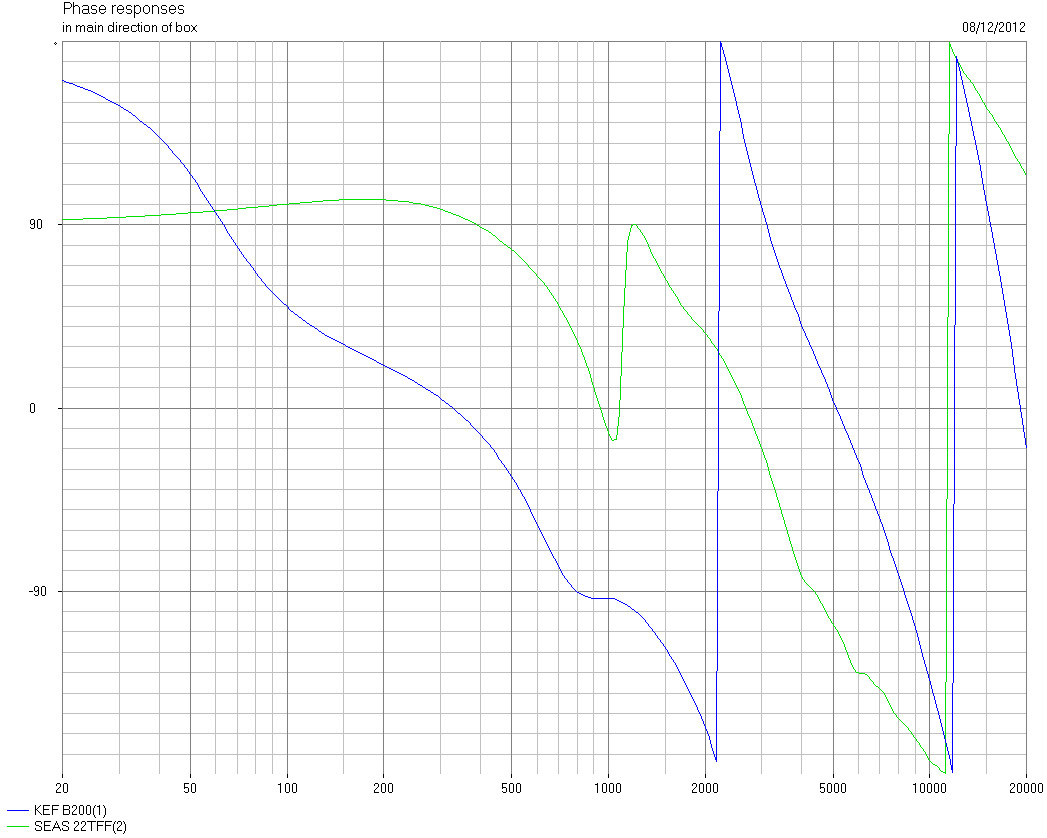
I enjoy listening to them, particularly in the small room they are used in. They do sound rather weedy compared to my celestion ditton 25's due to the lack off LF below 45Hz but they have smoother mid range and slightly crisper highs. (they are slightly bright)
With the front baffle being inset and the B200 not being flush mounted like kef suggest it should be, i imagine things are quite different to the simulations. The grilles sit within about 3mm of the driver face and are cutout tightly around the woofer and the edges are chamfered. Teh tweeter and port cutouts are much larger. This is how they look with the grilles fitted...

This is the simulated phase response (also likely to be inaccurate)...
I enjoy listening to them, particularly in the small room they are used in. They do sound rather weedy compared to my celestion ditton 25's due to the lack off LF below 45Hz but they have smoother mid range and slightly crisper highs. (they are slightly bright)
Attachments
You're (estimated to be) about 130 degrees out of phase at the crossover point on-axis.
is that simulation taking into account the differential in distance from listener to each voice coil or not? It's possible that you have much better summing through the crossover at a real world listening position than the simulation would suggest. A couple inches at 3000hz could swing that right back into phase but if the simulated phase includes the differential then I would suggest flipping the polarity of one of the drivers and have a listen.
is that simulation taking into account the differential in distance from listener to each voice coil or not? It's possible that you have much better summing through the crossover at a real world listening position than the simulation would suggest. A couple inches at 3000hz could swing that right back into phase but if the simulated phase includes the differential then I would suggest flipping the polarity of one of the drivers and have a listen.
The SP1063 is a higher power handling version of the SP1014. (Got used in the chorelli)
They only sound weedy when used in a large room and compared with the ditton 25's that are normally used there. In the bedroom where these are used, they sound fine down to the mid 40's.
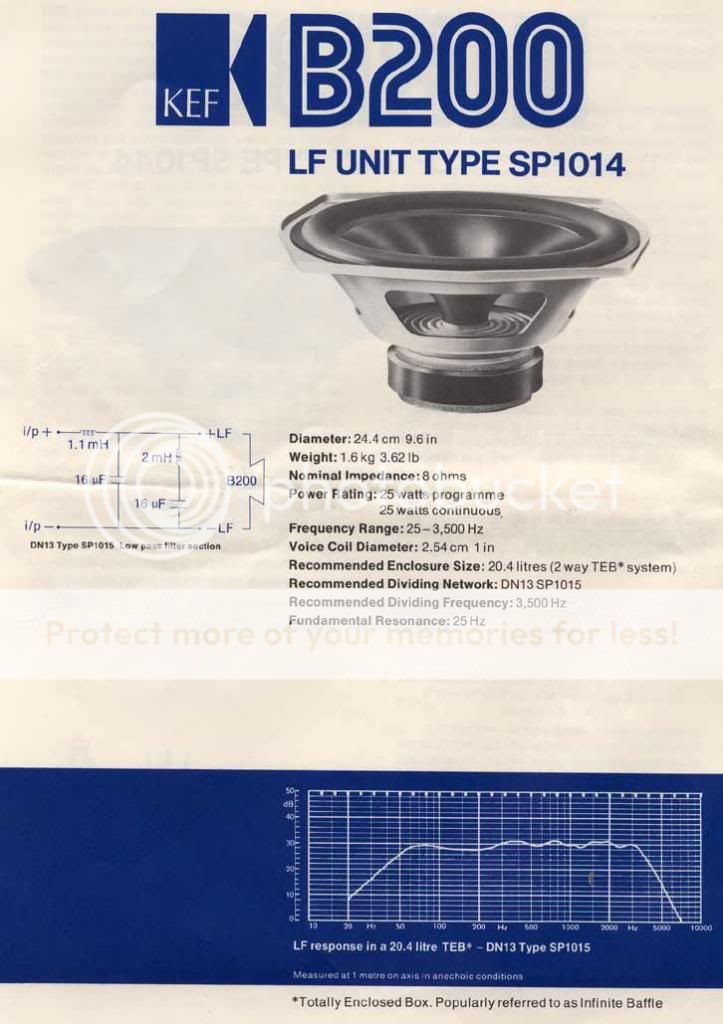
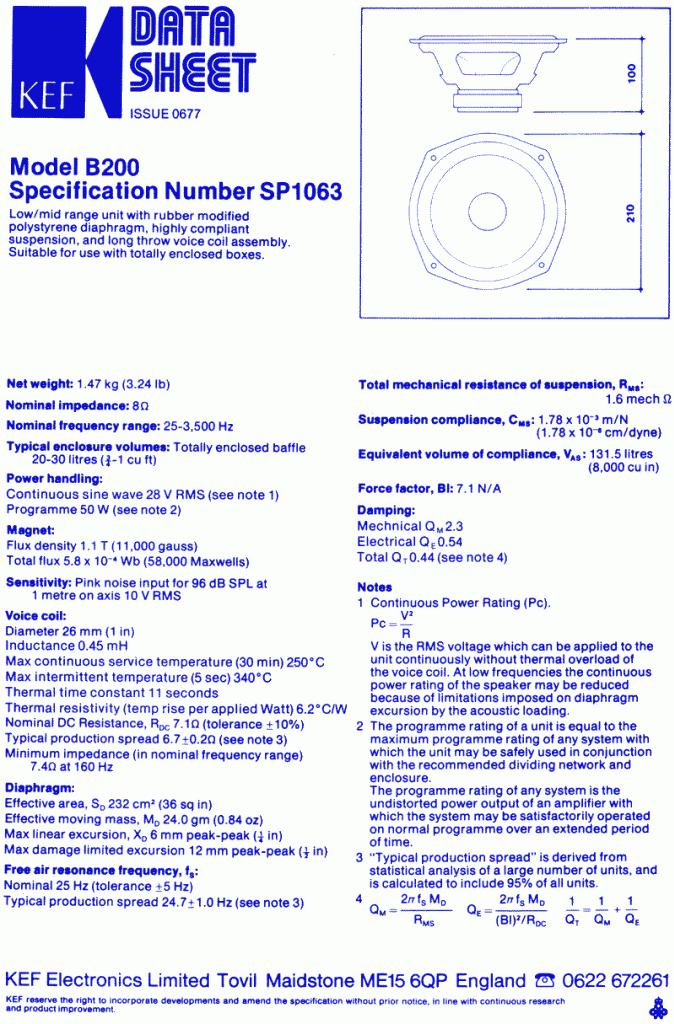
They only sound weedy when used in a large room and compared with the ditton 25's that are normally used there. In the bedroom where these are used, they sound fine down to the mid 40's.


Last edited:
Kei
Holm impulse is the one often recommended around here, a quick search should find it, are you using an external soundcard/preamp?, making measurements is fun and addictive and puts you head and shoulders above most, its a learning curve and depending on your background it might be quite steep but persevere
Laurence
Holm impulse is the one often recommended around here, a quick search should find it, are you using an external soundcard/preamp?, making measurements is fun and addictive and puts you head and shoulders above most, its a learning curve and depending on your background it might be quite steep but persevere
Laurence
Kei,
as long as the transformer isoates the sound card from the phantom power supply you should be fine, the preamp might be AC coupled anyway but its best to check theres no 48 V DC on the preamp side. The Behringer mic is a good starter, on this side of the pond they are uncalibrated (parts exprs and another company do calibrated versions), but the measurements should be fine upto 10K or so, and past that things gets less critical anyway. Depending on your measurement space you should get down to 750Hz or so before reflections start messing up the acoustic response, your garden then becomes a good place when its warm enough. For impedance measurement I have used speaker workshop + measurement jig, but any jig/software that allows you to measure the frequency dependent voltage across, and current through, a drive unit would do, hope this helps.
Laurence
as long as the transformer isoates the sound card from the phantom power supply you should be fine, the preamp might be AC coupled anyway but its best to check theres no 48 V DC on the preamp side. The Behringer mic is a good starter, on this side of the pond they are uncalibrated (parts exprs and another company do calibrated versions), but the measurements should be fine upto 10K or so, and past that things gets less critical anyway. Depending on your measurement space you should get down to 750Hz or so before reflections start messing up the acoustic response, your garden then becomes a good place when its warm enough. For impedance measurement I have used speaker workshop + measurement jig, but any jig/software that allows you to measure the frequency dependent voltage across, and current through, a drive unit would do, hope this helps.
Laurence
If you want anechoic response then as big a room (including floor to cieling height) as poss as this allows you to get down to lower frequencies with time-domain gating of FFT signals. Anechoic response is really what you want for mid-bass and upward. For design its usualy acceptable to use an enechoic response from around 500 Hz up (or as low as you can get really) and then splice in a nearfield response of the woofer. Some will also look at a long time ungated in-room response to judge things like baffle step correction. Then its about looking at off axis response and non-linear distortion.
Laurence
Laurence
If i measure the response in the room from my listening position, would i need to run it with both speakers playing or as single entities? (It'd be nice to see what the response is like with the room influence) I'll save outdoor measurements for the new year when it's warmed up a bit.
Out of interest, how good would the mic be for recordings?
Out of interest, how good would the mic be for recordings?
Start with gated measurements of one driver of one speaker, on-axis, from 1m. You won't know if it's working reasonably well if you start with more messy things.
That type of microphone sounds better than you might think for recording, but can't handle high levels well, so instruments that must be played very loud are out, and you have to record most things from fairly far away. That, combined with being an omni, means you get a whole lot of the room in your recording, for better and worse. In other words, you can figure out ways to use it for home recording fun, but in the studio it would be pretty useless.
That type of microphone sounds better than you might think for recording, but can't handle high levels well, so instruments that must be played very loud are out, and you have to record most things from fairly far away. That, combined with being an omni, means you get a whole lot of the room in your recording, for better and worse. In other words, you can figure out ways to use it for home recording fun, but in the studio it would be pretty useless.
- Status
- This old topic is closed. If you want to reopen this topic, contact a moderator using the "Report Post" button.
- Home
- Loudspeakers
- Multi-Way
- Simulation accuracy with boxplot
